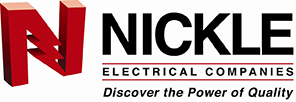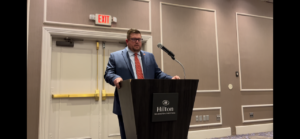Time flies. December 31 will be here before we know it. This is the time when businesses should start focusing on goals and strategies for the coming year. Within the next few months we’re going to be distracted by reaching this years’ goals, holidays, parties, and employees using up vacation time at the last second. So you need to start planning for 2016 as soon as possible.
Remember, you’re creating a vision for the future and mapping out how you’re going to get there. Plans for the future don’t begin and end at this meeting. It’s an ongoing procedure. Not every strategic planning session is alike. Every company has their own way of conducting the meeting and planning for the future. But there are a few things you can do that will make each session a success.
- Review last year’s goals and evaluate how successful you were in reaching them. This will give you an idea of how well-planned your strategies were. Were all goals met? Was there something completely out of reach that should be put on the backburner? Do some of the goals need to be altered to fit next year’s plan?
- Consider bringing in a facilitator to run the meeting. A professional can keep you on track and team members may be more likely to speak up if they’re not being led by the boss. If you want someone from your team to facilitate, make sure you pick someone that will follow the agenda closely and encourage participation from everyone.
- Host the session at an offsite location. Sitting in the same old boardroom won’t inspire creativity. Get team members out of the office and into a new environment to get them thinking outside the box.
- Prepare an agenda and put it in the hands of all team members before the session. Give them the opportunity to suggest additional agenda items and ask for clarification if they need to. Your team now has a plan to follow and won’t get sidetracked.
- Remember that every goal and idea should revolve around your mission statement. Provide a copy of the statement for team members to refer to while brainstorming.
- Team members need to be completely present and engaged during the session. Consider collecting mobile devices, or make sure everyone turns their off, at the start of the session so they don’t get distracted by texts, phone calls, or emails.
- Set aside time for breaks, snacks, coffee, and meals. Team members will have a chance to clear their head and catch up on emails and other day-to-day operations that need your attention.
- Most planning sessions are attended by high-level management. But soliciting ideas from other staff members will generate more input for discussion at the meeting, whether you conduct surveys or host focus groups. Plus, management and mid-level employees probably view the company in totally different ways. Those staff members will appreciate that you’re taking their ideas into consideration and will most likely buy into the end goals you eventually lay out for the coming year.
- Make sure you prioritize each strategy before finalizing your plan. That way you know what goals take precedence over the others and which ones need more attention and resources.
- Once next year’s strategies are finalized, communicate the plan to all employees. Make sure they know how important their job is to successfully execute the plan so they don’t feel like just another cog in the machine.
- Be open to change. Goals will vary from year to year, which means the strategies to reach those goals will also vary. Setting the same or similar goals will put you in a dangerous rut. Don’t be afraid to set the bar high, you might surprise yourself.
- Meet regularly after the session to evaluate your progress. It will provide insight on how well you’re sticking to the strategies you laid out and keep you accountable. If you find that you’ve gone off track, these regular meetings will give you a chance to generate solutions and realign your focus.





